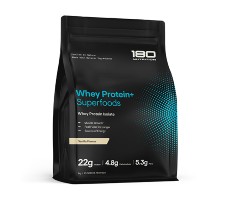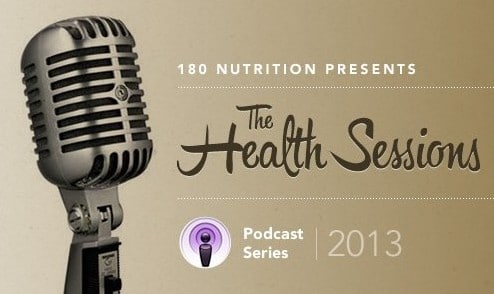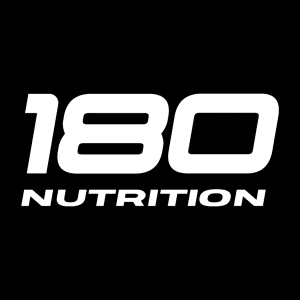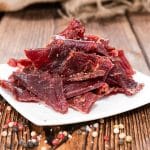 Podcast episode #4
Podcast episode #4
By Guy Lawrence
//
Ever wondered if we can live without carbohydrates? It certainly gets a lot of stick in the press…

Download or subscribe to us on iTunes here.
In this weeks episode:-
- Living with IBS (irritable bowel syndrome) & steps he took to help overcome it
- Living without carbs
- What is nutritional ketosis
- How to measure ketones accurately
- What fats he eats
- Exercising & weight training on a high fat diet with great improvements & not using carbs for recovery
- What a typical days eating looks like
- and much more…
- Useful links we discuss:
- Jimmy Moore – Livin’ la vida low carb
- Food Standards
If you would like a question or topic covered on our podcasts, then we would love to hear from you. We can be reached below on:
Email | Facebook | Twitter | Voicemail
Podcast transcription
Guy Lawrence: All right. Cool. So, it’s recording, all right?
Shane: Yeah, cool.
Guy Lawrence: Hey, Shane, thanks for dropping by and spending a little bit of time with us. The one thing that I wanted to cover today with you was low-carbohydrate living, because obviously you’ve got a little bit of experience with that and also ketosis, but before we jump into that, can you, just for the people that are listening to this podcast, just tell us a little bit about yourself? What you do and why you’re so passionate about health as well.
Shane: Basically, I’ve been a trainer for a fair while amount now, close to eight years. The reason I got into personal training was not only because it was something I seemed pretty good at, comparing my HSC results, which was business studies and personal training and sports science and stuff like that was simply because I was really curious about why I never felt the way that everybody else around me seemed to feel. My passion kind of stems from there.
I was noticing that I was one of the only people that I knew that would always wake up in the morning feeling sick, and I would pretty much maintain that feeling during all day until the night, and I would never really feel a difference between how I felt, I always just felt crap. So that led me to research a little bit more about the personal training industry and the health industry. I got my certificate III and IV. It took me longer than the average person, just because I wanted to do it in the hardest possible way by going through a private college and through TAFE. It gave me more exposure to different styles of things.
They’re all going to teach a little bit different, and what was confusing for me when I was going through much of set III and IV was that all of the stuff that I was listening to I was kind of doing but still didn’t feel any different, so I was following certain guidelines of the food pyramid, certain training styles, and monitoring my weights and sets, and all sorts of stuff that they teach you, and there’s nothing wrong with that, and you need to know that stuff, but, for me, it wasn’t working, and I think that’s the most important part is that if you notice that something is not working for you, then you don’t need to keep doing it. You need to change something, and that’s the most important part.
So, I kept researching, kept researching, got my certificate IV, became a personal trainer, worked at a few different gyms in the Northern Beaches because I was living in Ryde closer to the city and got a big break out here in Penrith, worked for a nice company. They did a really good job running that gym out here in Penrith which is now no longer.
Then I sort of decided to move from there and open up my own personal training studio here in Penrith as well and keep learning about different things and always keeping an open mind. I think that’s the most important thing. You have a lot of people out there who are just strictly paleo, strictly low-carb or whatever might be for them or strictly vegetarian or strictly vegan. I always think that if one of them made so much sense and one of them was perfect and correct then everybody would do it, and there’d be no hesitations, there’d be no miscommunication, there’d be no reading between the lines. It would just work.
I think that if you keep researching and looking around, you’ll eventually find something that works very well for you and your goals. It’s important, stuff like this, to listen to. We’ll talk about nutritional ketosis or whatever it might be, so you can understand and then make your own decision, and I think that’s the important part.
Guy Lawrence: Absolutely. Like you said, the most important part is simply keeping an open mind on actually what is working for you. I look at, I use myself and Stewie, my business partner, as examples because his body type is completely different than mine. He lives a very healthy lifestyle, but I know he can actually drink beer and eat pizza all day and still wouldn’t put any body fat on.
Shane: Exactly, and that’s why it’s so confusing, and you keep searching, and you’re told by leading experts when you go to some of the private colleges, you know, there are leading experts in nutrition, leading experts in exercise. You get told by them that this is the way, and if you’re not doing this then you’re doing it wrong, and I’m thinking, “Well, you know, I’ve done that,” and by then I was already practicing as a trainer, so I’d tried different things on different clients, and I had varying results 100 percent of the time.
If I did exactly the same thing with a different client, my results were completely different, so, for me, it made sense to keep my mind open and to work with what I was learning and to see where it would go with each person and myself and making my own decision. I think we rely too much on doctors and we blame them, as well, but we rely too much on doctors and nutritionists and all those sorts of people that are supposed to be giving us this correct information, and we don’t rely on ourselves and we don’t look internally.
We don’t search in our bodies as how each thing makes us feel. We don’t log. We don’t categorize. We don’t make notes of things that are making us come out in a rash or making us feel bloated or making us feel just a really crappy mood. Those things we need to be paying attention to. Not looking around for the best internet website that has all the information I need or the most…
Guy Lawrence: Yeah, there’s so much information out there as well and a lot of misinformation, and unless you trial it yourself and treat it more of a journey of discovery…
Shane: I think, like Jimmy Moore who I’ve been reading a lot up on, Jimmy Moore has a thing called N=1 that is nutritional ketosis experiment for himself, and I think that’s perfect. Why don’t we all do our own case studies? I mean, that’s exactly why I got into personal training. I was my number one case study, and, from there, I was able to tell people what I was doing and people were interested. People enjoyed what I was doing. They could see the change in me, having excessively poor, really poor diets and habits and some really bad diet issues for basically twenty years or so, from the time I was born until the time I was twenty-something and got started to really change some things, and I’ve had a complete turnaround with how I felt.
I used to not be able to leave the house without going to the bathroom three to four times or so just from the food that I was having the night before. I’d wake up feeling clogged instantly and probably not leave for fifteen minutes just because I felt in so much pain, and there was nothing I could do about it. I thought that it was something that was just me. I was just different than everybody else, just some sort of defect with me, but it was really what I was eating. It wasn’t about me being different in any way. It was about the food that I chose to eat every day. Back then it was a lot of fast food. I don’t eat that at all anymore.
Guy Lawrence: Since you’ve changed your lifestyle completely, compared to where your health is now to where it was back then, what would you say it’s like? How is your IBS, for instance?
Shane: The IBS issues were probably the things that were affecting my quality of life the most. I had to make sure that when I went somewhere I had to go to the bathroom. I had to make sure there was one around. I had to make sure that I didn’t eat while I was out, because if I ate I noticed that I was extremely sick, and I couldn’t even stand up to the point when I had a lot of cramping and bloating.
Now what I do is I look for different options when I eat when I’m out, so I definitely have modified the choices I make so when I’m out I don’t suffer from that, and I’ve modified the foods that I eat at home so that in the morning I don’t feel sick and I don’t feel sick at nights, and my IBS is almost completely gone. The only reoccurring effects that I get would be if my anxiety is high at times of stress that will affect my IBS in a way that way, or if, for me, like nuts and seeds and certain types, it obviously varies, but those things can affect how my stomach feels and that’s the only thing that plays a negative role in my IBS at the moment.
Guy Lawrence: Yeah, okay. Talking of Jimmy Moore. We were both there at the Low Carbohydrate Down Under Tour, and he was the main presenter, of course, and he’s quite a funny guy to go with it, as well, and he spoke about living in ketosis, because that’s what’s working for him.
Can you, because I know you’ve been doing that for a little while now since we went to that talk, can you just, maybe, explain a little bit about what ketosis is? And maybe why you’re doing it?
Shane: Yeah. From the research that I’ve done, and, you know, I’m not a nutritionist, obviously, just learned a lot through researching and understanding in trial and error, for some research I’ve done but ketosis does seem to make a lot of sense, I mean, from an evolutionary standpoint. It’s an advantage for us for us to use fat for fuel. We already have about 24 hours of glucose stored in our bodies. We can’t really store more than that. That’s the most our body can store. With ketosis; a keto-adaptive sort of diet, you’re starting to use the fat for fuel, so the best way to describe it, and I’ve had a lot of clients ask me, and, if you get too technical with it, that’s when it will lose its appeal and people get really confused. Our brain can only function with ketones and glucose, so you need to make sure that you still consume small amounts of all the ketones, but, for how it works, if you’re limiting your carbohydrate consumption, your body still needs to find the mechanism for it to burn fuel for energy to make you do things, so, if you’re limiting your carbohydrate consumption, your body needs to change the mechanism or the way that it burns fuel, and so then it looks for, basically, fat, and that’s the way it sort of starts to transition so you stop giving your body acceptable amounts of carbohydrate really low. I think that the average guidelines for how much carbohydrate would be no more than 50 or 60 or so grams?
Guy Lawrence: Yes, and it’s essentially increasing your fat intake…?
Shane: Yeah. That’s the other thing, you do need to increase your dietary fat consumption, and there’s a lot of things that I agree on and have read up on and there are a few different things I’m sure we’ll get into in a minute, but you do need to increase your fat consumption so that you can use that fat for fuel, but what people tend to do is they increase their protein consumption as well, and that’s one of the mistakes people make in nutritional ketosis is they over-consume protein. So they stop having carbohydrates and start to have more and more protein, because that’s really the only way they know how to get extra fat is through more meat and things, eggs, and they get their fat that way instead of something like avocadoes. Then they start to have more protein with their diet, and they find they never really adapt. They really never get ketone-adapted, because their body is changing the protein that they’re consuming into glucose through a process called gluconeogenesis and that makes you convert the protein that you’re having, the excessive protein that you’re having into glucose.
Guy Lawrence: How are you measuring the ketones?
Shane: We measure our ketones with a glucometer, but we get the glucometers that can measure blood ketones as well, so you can just add glucose and you can do ketones on the same machine. You can basically go to any chemist these days. You can pick up a glucometer and you can also get some ketone strips, and you calibrate it to measure the ketones, and you basically just prick your finger like you would with glucose, and you put it on to a ketone strip, and you put your blood sample on to that, and it will give you a reading. Most people start less than 0.3. They’ll start at 0.1, 0.2, 0.3…
Guy Lawrence: Is that millimolar?
Shane: Guy, I’m sorry?
Guy Lawrence: Is that millimolar?
Shane: Yes, it is. And so, for you to be keto-adapted, you need anywhere from 0.5 to 3.0. Anywhere in between that field and there’s no such thing as “I am in more ketosis than you.” It’s just a different reading. It’s not like one’s better than the other. As long as you’re in that range from that gateway, 0.5 and 3.0, you’re keto-adapted. You’re starting to use fat for fuel. That’s how we measure what we did for a long time. For thirty days, we kept a graph, and every day we measured, when I say we, there are a whole group of us that are doing it, me and my sisters now.
We all kept graphs, and we basically just measured the day it was, day one up to day thirty, and then how many millimolars it was, 0.5 or 0.4, and we measured that, and we watched it go up and down. It kind of fluctuates. It’ll go up, and it’ll come back down, and it’ll go up and go back down, and then eventually get to state when you’re constantly in that gate, which is 0.5 to 3.0.
Some people can even go outside that, but, yeah…
Guy Lawrence: When would you measure it? Would it be first thing in the morning or last thing at night?
Shane: I never found any, really, information for myself that told me decisively what to do, but I, for me, I stand that as long as I was consistent I was getting a consistent reading, so I would do it upon waking, so after I had been fasting, obviously I’d been asleep for eight or nine hours, so right after I woke up, I would do a reading then, and then I would live my day normally. I’d definitely avoid a lot of carbohydrates in the morning, and I wouldn’t actually need to eat too much, because I wouldn’t be hungry. Then I’d do my last measurement after dinner, say two hours after dinner. If I ate dinner at say 6:30, 7:00, I’d probably do it closer to 9:00, 8:00, and get my measurements, mark them down.
You just see a shift, and, during it, when you first start, you feel really happy. You know you’re trying to teach your body a way to burn fuel in a different way. It has to learn, and it doesn’t like it, because it’s done something for a long time, so eventually, it sort of…
Guy Lawrence: When you say that, how did you feel when you first started doing it?
Shane: I felt. . . When I did start transitioning into nutritional ketosis, I keto-adapted, say, I felt really, really tired, and it’s hard to distinguish between what’s happening in my life and what’s happening with my food, because I lead a very stressful life, here and there, running the gym and doing all the work, but I really felt a little bit flat, and I kind of felt foggy, was the best way to describe it, like I hadn’t fully woken up, and I guess that’s true, because my body was not really understanding what to do with all this new way of living. It was confused, and as the confusion passed for it, and it got to learn how to change what it was doing and start using ketone bodies as opposed to glucose for fuel, I started to get a bit more of energy, and I happened to reduce my training when I first started condition. I have to train every second day and not every day. I was training about five days a week, five, six days a week when I was running predominantly on glucose, and that was relatively fine. I still felt tired, but when I started to transition I felt worse, so I stopped training every second day, started to just focus on what I was doing with my food, and eventually I adapted, and I could get back to training every second day. I felt stronger. I actually increased all of my major lifts. I increased my deadlifts. I increased my clean-and-jerk by almost 15 kilos on that weight, and you’ve got to be very; there’s obviously a lot of factors that affect those things, but that’s one of the things I did, and I did see an improvement in those lifts, and maybe it was because of that, maybe it was because of a lot of things, but that was one thing that I did change, and then I did see an increase in those things, so…
Guy Lawrence: That’s interesting. I just want to clarify something, as well. When I came out to your place, I know you were pretty strong about that. With the deadlifts, just to anyone that exercises and is listening to this, what weight were you deadlifting? Just to give other people an idea.
Shane: Might seem strong to you, but there are a lot of people out there that are lifting more, but…
Guy Lawrence: Well, for sure.
Shane: Just to give an idea, before I wasn’t able to get over 200 kilo deadlift. I was talking about 190, 195; 195 on a day that I felt awesome. That was running on glucose, running on sugar, and then when I changed my diet, after I’d adapted and I felt better, I deadlifted 205 for two reps and then I deadlifted close to 208, 210, for one, so I’d almost put on 15 kilos onto my deadlift in that same space of time, which would have only been about less than a season, so less than three months, and I really wasn’t making it.
My strength training was the same, but I just felt a little bit more explosive, a little bit more active, like those short things were making a big difference. My weighted dips went from 55 kilo weighted dip up to 65 kilo weighted dip, and I put on ten kilos on my weighted dips, on my pull-ups from 55 to 65, as well.
Clean-and-jerk went from 95, if I was lucky, on days when I was feeling good, to 110, 115 kilos clean.
Guy Lawrence: That’s impressive. Were you using any carbohydrate in recovery? You know what it’s like. People that weight train, the first thing you do is stoke up the carbs.
Shane: While I’m just on ketosis, no, I wasn’t. I was still avoiding most carbohydrates. The most sugary-ist thing that I was having or the sweetest thing that I was having would have been my coconut water. If I were in pain I’d make my shake, and I’d use the 180, if I needed to, but I found it was affecting my nutritional ketosis because of the protein, so I had to really limit what I was having and what I was doing. I just kept an eye on it, you know? It’s not that I stopped; I just kept an eye on what I was…
Guy Lawrence: Yeah. Absolutely.
Shane: …the protein content and the carbohydrate content that’s on there comes close to pushing me over my limit, if I have too much of it, so I was really mindful of it, that’s all.
Guy Lawrence: And this thing fascinates me, especially, we both come from PT backgrounds, as well, and one of the first things you’re taught is you need carbohydrate to replenish after a weight training session and to help increase muscle mass, and this just blows that theory completely out of the water. I mean they’re two different theories, really, I think there’s many ways to skin a cat.
Shane: I’m not an elite CrossFitter or anything. I don’t even compete in CrossFit at all. There are people out there that are working a lot harder than me that may need to tweak that a little bit, and they may need a little bit more carbohydrate for their training. I think, if you want to be in nutritional ketosis, you do need to watch out, because it can knock you out of it relatively easily, so I’m telling you that you need to play around with that. Like I said, I haven’t been able to figure out what I can tell someone to do for it to work…
Guy Lawrence: For sure. For sure.
Shane: And if we’re measuring and testing and measuring and testing and measuring, you can come up with almost the most perfect diet. You have to do that, otherwise you’re eating blind. People come up to me all the time about how: “It’s a little bit annoying that you tell me that I have to do this and measure,” but I don’t tell them to do that; make that decision for themselves, that they have to test and measure for them to be so specific, but otherwise it’s kind of blind, and I don’t know why everyone’s so lazy with it, like it’s such a big deal.
I think that people should know what they’re putting into their bodies, how much they’re putting into their bodies. Whether or not you do that forever, you don’t need to, once you understood how many carbohydrates, how much carbohydrate, how much protein, how much fat is in something, and you know how many grams there is like how much 100 grams contains.
It’s so simple to do, but, you know, it’s no extra math than getting out the chicken from the fridge. You just know. Someday it just becomes second nature, just like everything that we do. It’s a little bit of effort at the start, a little bit of training and research when you first start into the food you’re consuming and what they contain. You never have to do it again, because you know all the time exactly what you consume.
Guy Lawrence: Yes. While we’re talking about consumption, can you tell us when you’re in ketosis what your typical daily food would look like?
Shane: Yeah, of course. My morning breakfast is 100 grams of avocado, so, at the moment that’s keeping me satisfied for a lot longer. I was starting off on a little bit less. My other goal required that I eat a bit more fruit, but 100 grams of avocado with a tablespoon of coconut oil mixed through, so I’m basically full on the other side of that, mixed through my coconut oil, which is a cold-pressed, extra virgin, organic style, the best for me to consume in high amounts.
A tablespoon of that, mix that through, and then I was adding just a, I started off on, remember you have to test and measure, so I did, two eggs which are fried in butter, so I used about 20 grams of butter on a stainless steel pain, and I fried my eggs in that, in the butter, and I poured the butter back onto the eggs, and I poured it into the avocado, so I fried the eggs separately, made my little avocado dip, like a little guacamole looking thing, and then put my eggs back on, poured my butter back in the bowl, and I added another 20 grams of butter, or ten grams butter, depending on how hungry I was, to that mix so that it would melt through, and then I mixed it through with a little salt and a little pepper, and if I wanted to use a lot of spice or something, I’d do that.
Pretty much that would last me from my morning class which is about 5:00 to 6:00, I believe, or a little bit later, all the way up until lunchtime. I’d get close to six hours, and I, honestly, and people who know me know that I’m always before that, before I did nutritional ketosis I was constantly searching for food, and since changing to doing that simple thing for breakfast, I was able to completely hold off my hunger, and I was actually really surprised that no longer was I focused only about food until lunch time.
Then I would have, for lunch, I would pick, depending on what meat that I wanted to have, generally it was beef, because I felt it would sustain me for longer. I would have about 100 grams of beef or 150 grams of beef, now that seems like a very small portion, and I used to eat triple that, and it never satisfied me as much, because I wasn’t having any fat with it, so I basically was eating that, so when I was doing nutritional ketosis, I had the 100 grams, 150 grams of a t-bone or something, and with that I would make just a simple salad.
I’d have just some lettuce, something that’s really low in carbohydrates, and then it’s onion, cucumber, and then I would drizzle over that salad another tablespoon of coconut oil and some avocado as well, which actually works really well, so more avocado at lunch. Drizzle over the coconut oil over that, and I would consume that.
I wouldn’t go hungry again until dinner, if I wasn’t training. If I was training, so on training days I would have another meal, so at 12:00 to 1:00 I’d have that, and I train at 5:00, so I’d probably have 3:00, 3:30, in between 3:00 and 4:00 I would have another snack on training days that was the whole inside of a coconut and about four tablespoons of cream, a little bit of, maybe one or two strawberries cut up, any more than two and I found that strawberries really affected my glucose levels when I was measuring them. They really, for some reason, had a bit of an effect on me, I still don’t know why, but I just limited my consumption of strawberries and had two strawberries cut up and I just diced them up, put them with the cream and the coconut and had that for my snack.
And then I would train, and I would find that would satisfy my training needs, and I wouldn’t be hungry after training any more, which is interesting…
Guy Lawrence: That’s fascinating. Yeah, yeah.
Shane: Yeah, I normally used to be starving after training and not be able to talk to anyone until I had my 180 protein shake and all the stuff that I needed to have right for me to get back to normal reality and start focusing, but I was still conscious. I was focused. I could still go straight from training to teach a class, which is what I did many times, and that lunch and that snack on training days was really, really crucial, and that helped me stay focused.
Then I would make dinner again until close to 9:00, between 8:00 and 9:00, because we would do work again or do more classes, and 8:00 or 9:00 we would probably sit down to a very similar meal to what we had for lunch.
Guy Lawrence: Yeah, right.
Shane: And snack would be same, very similar to what I had as a snack in between training.
Guy Lawrence: So, one other question I got for you while we’re on that then. Obviously, you’re not getting the sugar highs and lows from the carbohydrates, because I think it’s easy to forget that a lot of out emotion, our feeling through the day is driven by the foods we eat, you know, whether we feel euphoric or tired or whatever it may be. How did you find your clarity of thought?
Shane: That was probably the reason why I would; that’s my biggest advocate of the diet is that my clarity is so, I felt like, and until you try it you’re not going to really know what I’m talking about, you’re not going to really feel what I’m saying, but I am the person who is always running around 100 times a day doing the same job but getting nothing done, so when I started doing the nutritional ketosis and leaving it fully adapted, I noticed that I wasn’t forgetting things. My memory seemed to improve while I was doing that. I used to get grumpy and really angry in between meals, and I don’t know, now looking back on it it’s obviously because I was going through those, you know, people were unaware, but when you start changing what you do you’re aware that those sugar highs and lows really do affect hungriness and how you’re going to feel in between those meals, so when I was getting close to running out of energy, I was getting really frustrated, and all I could think about until I had eaten nothing else in my life could get done, and so basically, I found, everything was filler in between me eating, so work and everything was a filler between the next meal, and I was having to eat more and more and more, and my portion sizes got bigger and bigger and bigger, and then my body composition didn’t really change at all. I didn’t really get any fatter. I didn’t really get any skinnier, even though, I was looking for food. When I started the nutritional ketosis, I noticed that I instantly started to lean down. Within fourteen days, it was pretty quick when I started to feel trimmer, and we do our DEXA scans every season. There was a good correlation between that. I think I lost another percent of body fat in three months, which was good, but I hadn’t even been doing the nutritional ketosis for all that long when I went to get my DEXA scan.
Guy Lawrence: Yeah, fantastic, mate, fantastic.
Shane: I think that people need to try, you know, you need to give it a go, and people go, “That’s kind of vague, Shane.” It’s not vague, because I don’t get into your body every morning and feel how you feel when you wake up. I don’t know how you feel after training. I don’t know what you’re eating, because I only see you for a few, you know, my clients, I only see them for a small portion of the day, and I only hear brief stories of what they’ve done. You have to really trial and error. You have to test it, see where you are with the ketones in your blood, and that’s the only way to really test it, through your blood, so you’re getting the hydroxybutyrate, beta-hydroxybutyrate, which is the ketone body that you’re looking for so that you know that you’re getting the right levels. Whereas the urine sticks don’t give you the same response. They test for something different, so you need to make sure you test it with blood, and you’re keeping a good log, so that you know where you are. It only takes thirty days with the graphing for, so we knew where we were and what foods were affecting us and then after that we didn’t even need to worry about it anymore, we just knew that food is good, that amount of it’s good, less or more.
Guy Lawrence: Yeah, and I think, as well, like somebody said to me once, “You know, you can’t be half pregnant,” and I think with nutritional ketosis you either get stuck in and give it a good go, or you don’t do it…
Shane: That’s an interesting point. Another one that I thought of is the fact that, you know, you live a practical lifestyle. We had a Christmas party during that time, which knocked me out of the nutritional ketosis. I was measuring, and it knocked me completely out, and, like you said, you can’t be half pregnant, you can’t be half in, because by the time you really adapt back into it, you’ve lost three or four days minimum for most people, and I know people that took up to four weeks to fully adapt. If they really started trying to be half-assing it, sort of what we call it, you know, “I’ll do it Monday through Friday, and Saturday and Sunday I’ll just do whatever I want.” They’re really not living the ketone lifestyle. They cannot be keto-adapted, if on the weekends they’re bingeing on sugars and beers and wine and stuff.
Guy Lawrence: Yes.
Shane: …and stuff, and in excessive amounts or they’re not measuring and seeing what they need, because some people can still get away with it, but you need to know because you need a test. You don’t know, unless you’re testing. You don’t know whether or not a beer in the afternoon, on a Sunday afternoon isn’t going to really throw you out of nutritional ketosis unless you measure, and if you checked to measure, you know it.
So, you can really sort of guide your lifestyle and fit your lifestyle into it, if you just measure it and test it.
Guy Lawrence: Yeah, and for people that are listening to this and are curious and think, “Maybe I want to give that a go.” What would be your advice to them, if you could sum it up in two minutes? Where would you start? Where would you go? Who would speak to? Any books you can recommend or people or podcasts?
Shane: Well, there’s a, if you’re feeling that way, you definitely, definitely start with testing, I mean, otherwise you’re just guessing. If you’re not testing your blood ketones, I mean, that’s the whole point. You need to know that you’re in nutritional ketosis. The only way to do that is to test your blood ketones. So I would definitely go buy starting the kit. Buy the kit. Any pharmacist should be able to sell it to you. You get a rebate on the machine itself, so you don’t actually spend any money on the machine. It’s the strips you spend money on. Once you’ve started that, the next step I would give people is just to really focus on just seeing, writing down what they’re eating, jump on fantastic websites, like CalorieKing that can tell you what is in your food, or there’s a thing called NUTTAB, I think, if you’ve ever spoken on it, broadcasts like that, N,U,double T, U, B. It has all the information on all the food that you eat, basically, fully broken down.
Guy Lawrence: It’s called NUTTAB. I can put links up on the website anyway, so you’ll have those links.
Shane: It’s not coming up there…
Guy Lawrence: That’s all right.
Shane: Just having Google, you’ll be able to find out exactly what’s in your food, if you don’t know. Yeah, it’s N,U,T,T,A,B. If you just type that in Google, it comes up, “NUTTAB 2010 Food Standards Australia New Zealand.” It has all the food standards and all the breakdown of all the actual nutrients in your food, so that’s all you need to know. Don’t overthink it, that’s other advice. Don’t overcomplicate it. Keep it simple. Obviously, everyone knows they’re probably eating too much carbohydrate. The other good advice is when you’re starting out, don’t over-consume protein. Make sure you have a high fat diet, moderate protein, low-carbohydrate consumption. If you don’t know what those things are made up of, do a little bit of research.
The other advice? Make sure you understand, it’s your body. You need to know what you’re putting into it. You don’t just blindly do anything. You always are aware when you do things to your body, so just know what you’re doing and have a bit of research, and then, have fun with it. Enjoy the process. Log and record, and be your own case study, and if something doesn’t feel right, that’s the beauty of it, you get to go and search for a reason, be like a real-life detective and get in there and see how your body responds to some of the foods it does. I mean that’s kind of cool, having full control over how my body feels after food.
Guy Lawrence: You touched on something a little bit earlier, as well, about, you know, you mentioned as in “we.” There were several of you doing it…
Shane: Yeah. We do that a lot. We have such a strong community here, such a good foundation, that everything we do it together.
Guy Lawrence: You have a fantastic community up there. When I came up there I was blown away by the enthusiasm for what you do and what you do for others up there, as well, and that, and if people are going to try this, I think, if they can do it with others in a group environment or 30-day challenge or something like that, maybe with a gym and things and absolutely fantastic. I read a book very recently, which I’ve been meaning to for a while, which is The Art and Science of Low Carbohydrate Performance. I don’t know if you’ve read that one…?
Shane: Yeah, Phinney and Volek, isn’t it?
Guy Lawrence: Yeah, Volek and Phinney. Yeah, yeah, yeah.
Shane: I read that book, too. It’s really good.
Guy Lawrence: Yeah, books like that are a great place for people to start if they’re curious and just want to get their head around it a little bit more and things like that.
Shane: It does help, as well, so you need to just supply the information and read it and learn it and understand it, and I think it’s a really good book to teach you that nutritional comparatives, and what you’re looking for.
Guy Lawrence: Yeah, well, I’m going to tell you, Shane, I really appreciate your time. That was awesome. It meant a lot, too, and we’ll speak soon. Cheers, Shane.
Shane: All right, thanks, Guy.


 Podcast episode #4
Podcast episode #4



